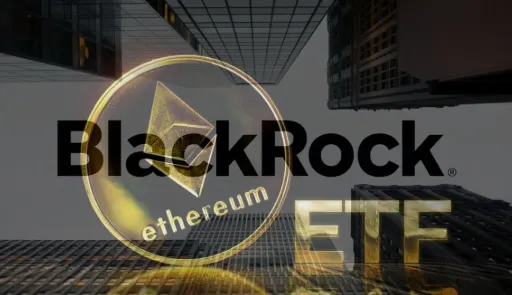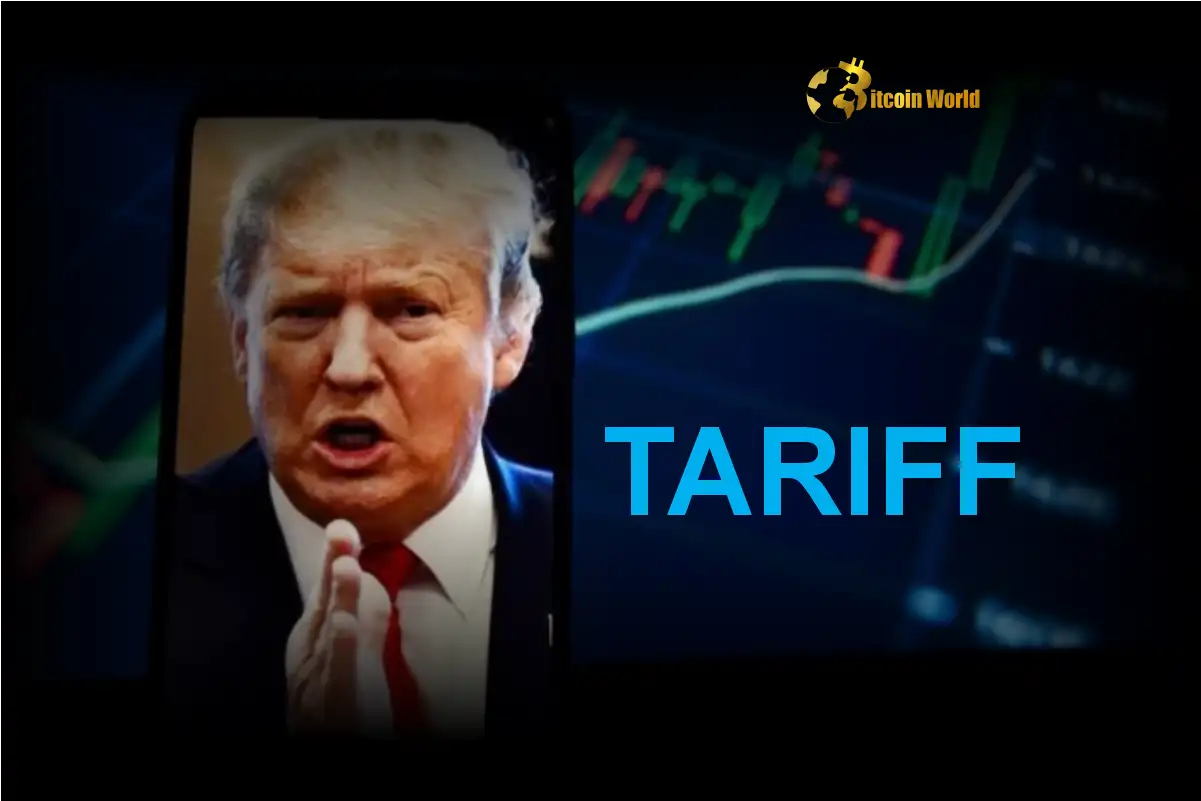 CaryptosHeadlines Media Has Launched Its Native Token CHT.
Airdrop Is Live For Everyone, Claim Instant 5000 CHT Tokens Worth Of $50 USDT.
Join the Airdrop at the official website,
CryptosHeadlinesToken.com
CaryptosHeadlines Media Has Launched Its Native Token CHT.
Airdrop Is Live For Everyone, Claim Instant 5000 CHT Tokens Worth Of $50 USDT.
Join the Airdrop at the official website,
CryptosHeadlinesToken.com
Institutional interest in Ethereum is on the rise, as developments in the network’s gas limit signaling and the performance of Ethereum ETFs point to growing confidence in the blockchain’s long-term potential. While validators rally to increase the gas limit to improve transaction efficiency, BlackRock’s iShares Ethereum Trust (ETHA) has emerged as a market leader, recording impressive inflows despite broader market volatility.
Ethereum Validators Signal Increased Support for Raising Network Gas Limits
The Ethereum network is witnessing a significant shift in sentiment among its validators as efforts to increase the network’s gas limit gain traction. As of Dec. 19, the percentage of Ethereum validators signaling support for raising the gas limit beyond 30 million has surged to 10%, marking a notable rise from just over 1% in previous months. This momentum reflects a growing community push to address high transaction fees and enhance the usability of the Ethereum blockchain.
The recent uptick in validator support is largely attributed to coordinated advocacy efforts from Ethereum developers, researchers, and community members. The push to increase the gas limit to 36 million, or even higher, has been met with enthusiasm by many in the ecosystem who see the adjustment as a way to reduce transaction fees on Ethereum’s layer-1.
Central to this campaign is the website “Pump The Gas,” launched by core Ethereum developer Eric Connor and former MakerDAO head of smart contracts Mariano Conti in March 2024. The platform urges the Ethereum community to rally around a gas limit increase to 40 million, arguing that such a change could reduce layer-1 transaction fees by 15% to 33%.
Support for the initiative has grown among prominent Ethereum researchers and developers. On Dec. 9, Ethereum researcher Justin Drake reconfigured his validator to signal a 36 million gas limit, stating that a 20% increase “safely greases the wheels” for the network. Developers like Emmanuel Awosika of 2077 Collective have also highlighted the importance of raising gas limits to foster innovation.
Awosika emphasized that applications with viral potential can cause gas prices to spike under the current limit, leading to a degraded user experience. For developers, this poses a significant barrier to creating scalable and widely used decentralized applications (dApps).
Balancing Opportunities with Risks
While the potential benefits of increasing the gas limit are evident, the community is not blind to the risks. Critics, including Ethereum Foundation researcher Toni Wahrstätter, caution that raising the gas limit too quickly could jeopardize the network’s stability and decentralization.
High gas limits increase the computational and storage demands on nodes, which could discourage solo operators from participating in the network. This could lead to centralization risks, as fewer nodes might control the network over time. The “Pump The Gas” initiative acknowledges these concerns, stating:
“If the gas limit is raised too high, we could create a scenario where the chain becomes too large for solo node operators to validate and download. Technology improves, however, and it does make sense to slowly increase it as time goes on.”
Additionally, raising the gas limit could lead to unforeseen externalities, including potential security vulnerabilities and congestion issues, which require careful analysis before implementation.
The debate over Ethereum’s gas limit brings attention to the complex interplay between scalability, decentralization, and security. While the push to raise gas limits has garnered significant community support, achieving consensus will require addressing the concerns of validators, researchers, and developers alike.
As more validators signal their support for higher gas limits, Ethereum’s path forward may involve incremental adjustments combined with technological innovations to mitigate risks. Initiatives like EIP-4844 (proto-danksharding) and the eventual implementation of Ethereum 2.0’s roadmap are expected to complement these efforts by reducing layer-1 congestion and enhancing scalability.
For now, the Ethereum community appears committed to exploring solutions that balance short-term needs with long-term goals. The rise in validator signaling reflects a network eager to evolve while preserving its core principles of decentralization and security.
BlackRock iShares Ethereum Trust Dominates with $3.446 Billion in Inflows Amid Market Volatility
In other news, the BlackRock iShares Ethereum Trust (ETHA) has set a new benchmark in the Ethereum exchange-traded fund (ETF) market, recording a remarkable 14-day inflow streak. On Dec. 18, ETHA attracted an additional $81.9 million in investments, bringing its total inflows to an impressive $3.446 billion, according to data from Farside Investors.
Since the approval of Ethereum ETF products by the US Securities and Exchange Commission (SEC), BlackRock and Fidelity have emerged as the dominant players in the market. Initially, Fidelity’s Ethereum ETF (FETH) appeared to lead in terms of inflows. However, BlackRock’s ETHA has gained significant momentum in recent weeks, outperforming its rival both in consistency and value of inflows.
Over the past two weeks, ETHA has consistently outshined FETH, with the latter breaking its inflow streak on Dec. 18. Fidelity’s FETH currently stands at $1.386 billion in total inflows—less than half of BlackRock’s ETHA. This shift highlights BlackRock’s ability to attract sustained corporate interest, even amid volatile market conditions.
BlackRock’s leadership in the crypto ETF market is not new. The investment giant has historically outperformed its peers across various crypto ETF offerings, cementing its reputation as a reliable entry point for institutional investors seeking exposure to digital assets.
The growing inflows into Ethereum ETFs, particularly ETHA, signal a strong wave of institutional interest in Ethereum. This sustained capital flow is seen as a positive development for the Ethereum ecosystem, as it demonstrates increasing confidence in the blockchain’s potential as a robust investment vehicle.
Institutional investments through ETFs provide a streamlined and regulated way for investors to gain exposure to Ethereum without the complexities of managing digital wallets or private keys. As these inflows translate into Ethereum purchases, they could contribute to upward price pressure on ETH in the long term, potentially setting the stage for the much-anticipated “altcoin season.”
Ethereum Price Under Pressure Despite ETF Momentum
Despite the bullish signals from ETF inflows, Ethereum’s price has faced downward pressure in recent weeks. Adding bearish pressure on the leading altcoin are remarks from Federal Reserve Chairman Jerome Powell, who dismissed the possibility of a strategic Bitcoin reserve for the United States, leading to broader sell-offs across the cryptocurrency market.
However, analysts remain optimistic about Ethereum’s price outlook. While ETF inflows have yet to stabilize the coin’s value in the short term, Ethereum boasts strong fundamentals that could drive a recovery. These include its position as the leading smart contract platform, the ongoing adoption of Ethereum-based decentralized applications (dApps), and continued development efforts such as scalability improvements and ecosystem upgrades.
The Ethereum ETF market’s growth demonstrates the asset’s increasing appeal to institutional investors. BlackRock’s ETHA has not only captured the lion’s share of inflows but also set the pace for the industry, providing a benchmark for other ETF providers.
Looking ahead, the sustained interest in Ethereum ETFs could catalyze further adoption and investment. Analysts project a potential recovery in Ethereum’s price, driven by a combination of ETF inflows and broader market resilience. This optimism aligns with the belief that Ethereum’s ecosystem, bolstered by its diverse use cases and innovative development roadmap, will continue to attract both retail and institutional investors.
As the market evolves, Ethereum remains well-positioned to benefit from the convergence of strong technical fundamentals and increasing institutional interest. Whether this translates into immediate price gains or sets the stage for long-term growth, Ethereum’s role in the cryptocurrency landscape remains undeniable.














